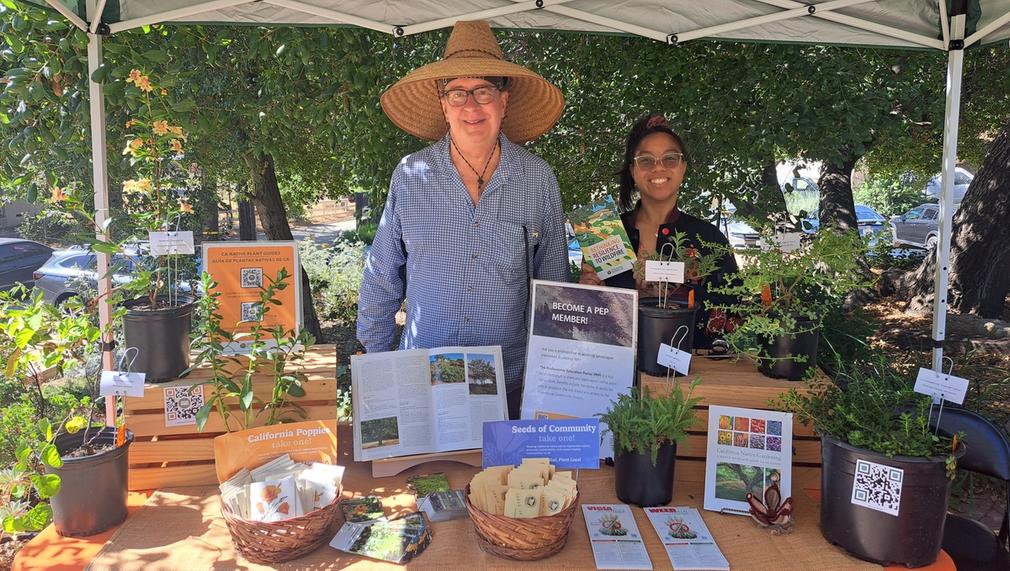Open-Source Nature Networks
Theodore Payne Foundation (TPF) will create open-source nature networks via free classes about native plant care and propagation and giveaways of locally native species in under-resourced communities. With native plants and know-how, communities can be their own change makers for increasing shade, green space, biodiversity and wildfire-resilience. Rather than concentrated in privileged places, native plants will be widespread and accessible to all.

What is the primary issue area that your application will impact?
Green space, park access, and trees
In which areas of Los Angeles will you be directly working?
East LA South LA San Fernando Valley
In what stage of innovation is this project, program, or initiative?
Pilot or new project, program, or initiative (testing or implementing a new idea)
What is your understanding of the issue that you are seeking to address?
Climate change is amplifying California’s ecosystem stress, causing unprecedented risk for the state’s ecological systems and nearly 40 million people. Urban areas in Los Angeles are particularly hard hit, heat-islands that offer little shade, green space, carbon sequestration or ecosystem services. Where there is accessible green space, it is often far from vulnerable and under-resourced populations. People need nature—healthy functioning ecosystems—where they live.
Ecosystems depend upon native plants.
Many Los Angeles communities are retrofitting from water-thirsty, sterile exotics to water-thrifty, biodiversity-supporting natives. However, these communities are usually well-resourced. Native gardens are few and far between in neighborhoods like South Los Angeles, western San Fernando Valley, and East LA, among many other places. We’d like to change that. The beauty and benefits of native plants must be spread equitably and shared by all.
Describe the project, program, or initiative this grant will support to address the issue.
TPF will partner with constituents in South LA, East LA and the San Fernando Valley to organize free classes and distribute locally native plants so that communities have plants, seed and expertise to grow nature networks. These networks will be perpetual resources for retrofitting yards, parkways, and public spaces with native trees, shrubs, etc. to bring the beauty and benefits of nature to people’s daily lives.
In each area, TPF will hold two outreach events and give away wildflower seeds to introduce native plants to the community. The on-line class “Introduction to Native Plants” will be offered in English or Spanish. Afterwards, three in-person classes will be held in each community: “Right Plant, Right Place,” “Lawn to Garden,” and “Propagating Native Plants from Seed or Cuttings.” Each in-person attendee will receive native plant flashcards, five locally native plants, and trays of native cuttings and seed. The knowledge, plants and seed will be a resource for greening the neighborhood from the inside out.
This solution is unique because it gives communities the knowledge and means to power their own nature-based transformation. Through hard-won wisdom, TPF knows that community-generated gardens are more successful than gardens planted by outsiders. Teaching communities how to generate and care for native plants creates emotional buy-in. TPF will share its knowledge, skills and plants so that the communities can drive their own ecological landscape transition.
Describe how Los Angeles County will be different if your work is successful.
If the project is successful, the ground truth of Los Angeles will change. Short-term, community members will propagate, install, and care for native trees, shrubs, etc., catalyzing each area’s nature-based transformation. Long-term, the LA landscape will, once again, begin to reflect its remarkable natural heritage. Imagine: oak and elderberry trees on south/west sides of buildings; wildflowers in medians; and white sage, buckwheat and bunch grasses in yards—all bringing the beauty and benefits of local ecosystems to LA communities.
The sky’s the limit for scaling and expanding this project with community partners.
This idea has the potential to transform LA County: Instead of there being a monopoly on propagation knowledge and few places to obtain native plants, communities will have their own local, perpetual source for positive landscape change. Native plant availability will be widespread and distributed rather than concentrated in a few privileged places.
Approximately how many people will be impacted by this project, program, or initiative?
Direct Impact: 990
Indirect Impact: 4,050